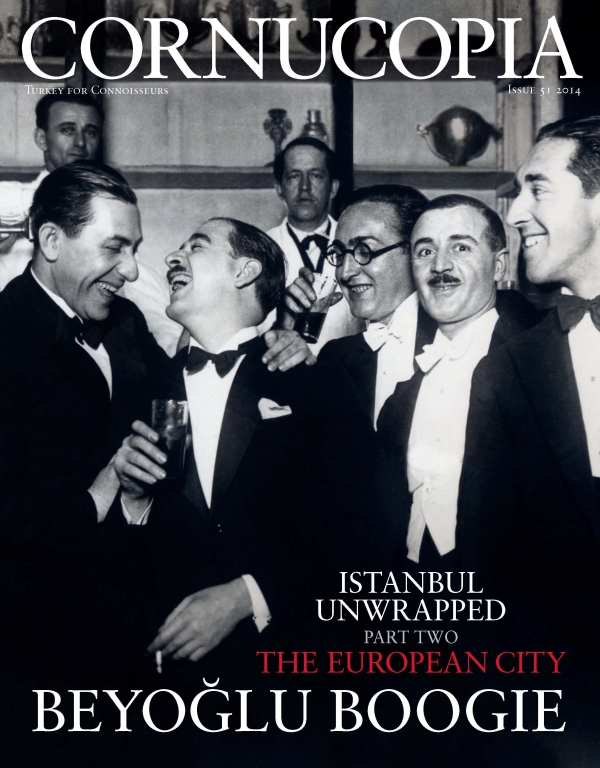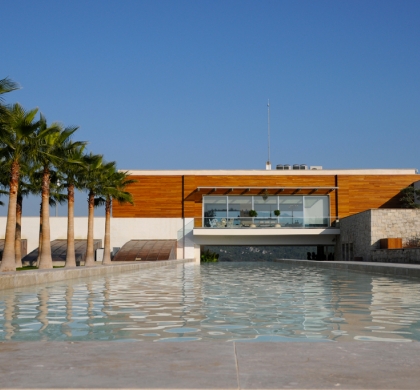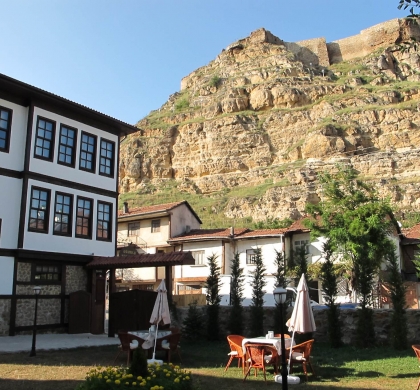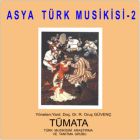Buy or gift a stand-alone digital subscription and get unlimited access to dozens of back issues for just £18.99 / $18.99 a year.
Please register at www.exacteditions.com/digital/cornucopia with your subscriber account number or contact subscriptions@cornucopia.net
Buy a digital subscription Go to the Digital EditionWhether or not it originated with Alexander the Great, pasta, in all its shapes and sizes, is a food that has known no boundaries of class, country or time, nourishing babies, delighting emperors and keeping armies on the move. Berrin Torolsan celebrates the Turkic take on a practical staple
With its hundreds of different shapes, pasta is today one of the most widely consumed and enjoyed of all the staples. The ultimate comfort food, it nourishes families, bachelors, students, babies, the elderly, convalescents and everyone else besides.
We owe the introduction and worldwide fame of pasta to Italy, and the countless forms it takes are still identified today by their Italian names. Trade in pasta seems to have started early. The medieval geographer al-Idrisi in 1150 reports shiploads of itriyya, dried pasta, being sent from Palermo, the old capital of the Arab emirate of Sicily, to countries both Muslim and Christian. And a Genoese soldier’s will from 1279 lists among his possessions ‘barixella una plena maccaronis’ – a chest full of macaroni.
The Turkish name for the pasta you buy in shops, makarna, is borrowed from the Italian maccheroni (anglicised as macaroni), the generic name for tubular pasta. This foreign import became part of Turkish cuisine and was transported, along with its Turkish pronunciation, to the Ottoman Empire’s Balkan and Near Eastern domains. Miss Julia Pardoe, in her book The City of the Sultan, describes a visit to the imperial macaroni factory near the Selimiye Barracks above Üsküdar in 1836: “the large hall in which we stood was entirely over-canopied with ropes of macaroni, and surrounded by presses and rollers”.
Back in the 18th century, however, the palace historian Ahmet Cavid remarked on the appearance in Istanbul of various products from Venice, Cyprus and Crete made with dough similar to traditional Turkish pasta, which he called erişte. It seems that Istanbullus took to this imported fast food, which even the city’s poorest families could afford. Although erişte was prepared in most households, it never became commercialised as it did in Italy.
Erişte consists of a simple dough of wheat flour and water, often enriched with eggs, rolled out with a special long, thin rolling pin called an oklava, then cut into ribbons similar to tagliatelle. These ribbons are placed neatly on top of each other, to be sliced crosswise into matchstick-like pieces called çöp, then left out to dry on clean flour-dusted sheets and stored in cotton bags for later use. Erişte can also be cooked fresh (see recipe). The soft dough is pliable and versatile, and has evolved over time into an endless variety of playful shapes – twists, pellets, butterflies and bow ties…
RECIPE FOR CEVIZLİ ERİŞTE
(Pasta with Cheese and Walnuts)
2 glasses durum wheat flour
2 eggs
Salt
Extra flour for dusting
Butter
Mature ‘kaşar’ or cheddar cheese, grated
Walnuts, crushed
The oldest form of pasta, erişte is traditionally prepared in the countryside in huge quantities, with basketfuls of eggs, after the harvest in late summer. The women take it in turns to help each other prepare the household’s erişte, turning it into a party with songs and jokes. The product of this shared labour is dried on clean sheets in an airy spot, or, in some regions, lightly baked dry to remove all the moisture, making it durable enough to last the winter without becoming mouldy. Durum wheat, which produces another winter staple, bulgur, is traditionally preferred. The erişte can also be simmered in less water to allow it to absorb all the cooking juices, like a pilav, which means that none of the goodness is wasted.
1 Knead a dough with the flour, a pinch of salt, the eggs and half a glass of water. If the dough is too firm, add more water sparingly; if too moist add flour. It should have the softness of an earlobe. Knead until elastic, shape it into a ball, and leave to stand at room temperature for an hour, covered with a damp tea towel.
2 Lightly dust a work surface with some extra flour and divide the dough into two balls.
3 Roll out one ball with a rolling pin to form a circular sheet of pasta one or two millimetres thick (old people say as thick as the blunt edge of a knife), then spread it out, without tearing it, on a clean surface to dry a little while you repeat the process with the second ball.
4 Lay the sheets of pasta on a flat surface and cut with a sharp knife into long strips about three fingers wide.
5 Dust these ribbons with extra flour and pile them neatly on top of each other.
6 Hold the stack down on the table with one hand, and with the other cut crosswise into slices the thickness of a matchstick (the uneven end bits are cut into smaller pieces either for soups or for immediate consumption).
7 Cook the pieces of erişte fresh in boiling salted water, or spread on clean tea towels to dry for later use.
8 Serve tossed with butter and a generous helping of cheese and walnuts.
Order Cornucopia 51 for the full illustrated feature plus recipes for uvmaç, tutmaç, kesme, mantı with chickpeas, su böreği, chicken soup and pilav with vermicelli, and a delicious, succulent baked macaroni.
Berrin Torolsan, bt@cornucopia.net.
See cornucopia.net/cookery for cookery articles from past issues,
 Issue 51, Summer 2014
Istanbul Unwrapped: The European City and the Sultan’s New City
Issue 51, Summer 2014
Istanbul Unwrapped: The European City and the Sultan’s New City
In the very thick of the city, with its fret and fuss, belching traffic and urban sprawl, lies a glade scented with linden blossoms. Here the young Sultan Abdülmecid built a jewel of a palace, grand but tiny, which is still a green oasis and place of escape. By Berrin Torolsan
Until the 20th century, visitors would sail serenely into Istanbul to disembark opposite the Topkapi. After this spectacular start, reality would set in. By David Barchard
For more than two centuries the Ottomans were obsessed by the elegance of the tulip and grew over 3,000 varieties, each characterised by almond-shaped petals drawn out into an exaggerated taper.
Across the Golden Horn from the Topkapı and the bazaars is the European City, where fortunes have for centuries been made and lost.
As the old European quarters flourished in their seclusion, Sultan Abdülmecid had a dream – and expanded to the east
Patricia Daunt extols the palatial embassiess that adorn the heights of old Pera. Photographs by Brian McKee
The Sakip Sabanci Museum has just celebrated 600 years of diplomatic relations between Poland and Turkey. Jason Goodwin finds deep-rooted affinities between the two countries
John Carswell introduces the mesmerising entries in this year’s Ancient and Modern Prize for original research
With 19th-century Istanbul in thrall to the music of Italy, an extraordinary theatre was born, the creation of one rather ‘odd character’. Emre Aracı tells a tale of comedy and tragedy
Black musicians, White Russian princesses, Turkish flappers… During the Jazz Age, Beyoğlu was a ferment of modernity and decadence. By Thomas Roueché
For 700 years, the European quarter was home to Genoese, Jews, Greeks and many others. Norman Stone charts the district’s changing fortunes
Maureen Freely recalls the artists and writers who enlivened her childhood with their flamboyant bravado and unspoken sadness


 Issue 51, Summer 2014
Istanbul Unwrapped: The European City and the Sultan’s New City
Issue 51, Summer 2014
Istanbul Unwrapped: The European City and the Sultan’s New City

TÜMATA The Traditional Turkish Music Research and Promotion Society, Dr Rahmi Oruç Güvenç

Cornucopia works in partnership with the digital publishing platform Exact Editions to offer individual and institutional subscribers unlimited access to a searchable archive of fascinating back issues and every newly published issue. The digital edition of Cornucopia is available cross-platform on web, iOS and Android and offers a comprehensive search function, allowing the title’s cultural content to be delved into at the touch of a button.
Digital Subscription: £18.99 / $18.99 (1 year)
Subscribe now